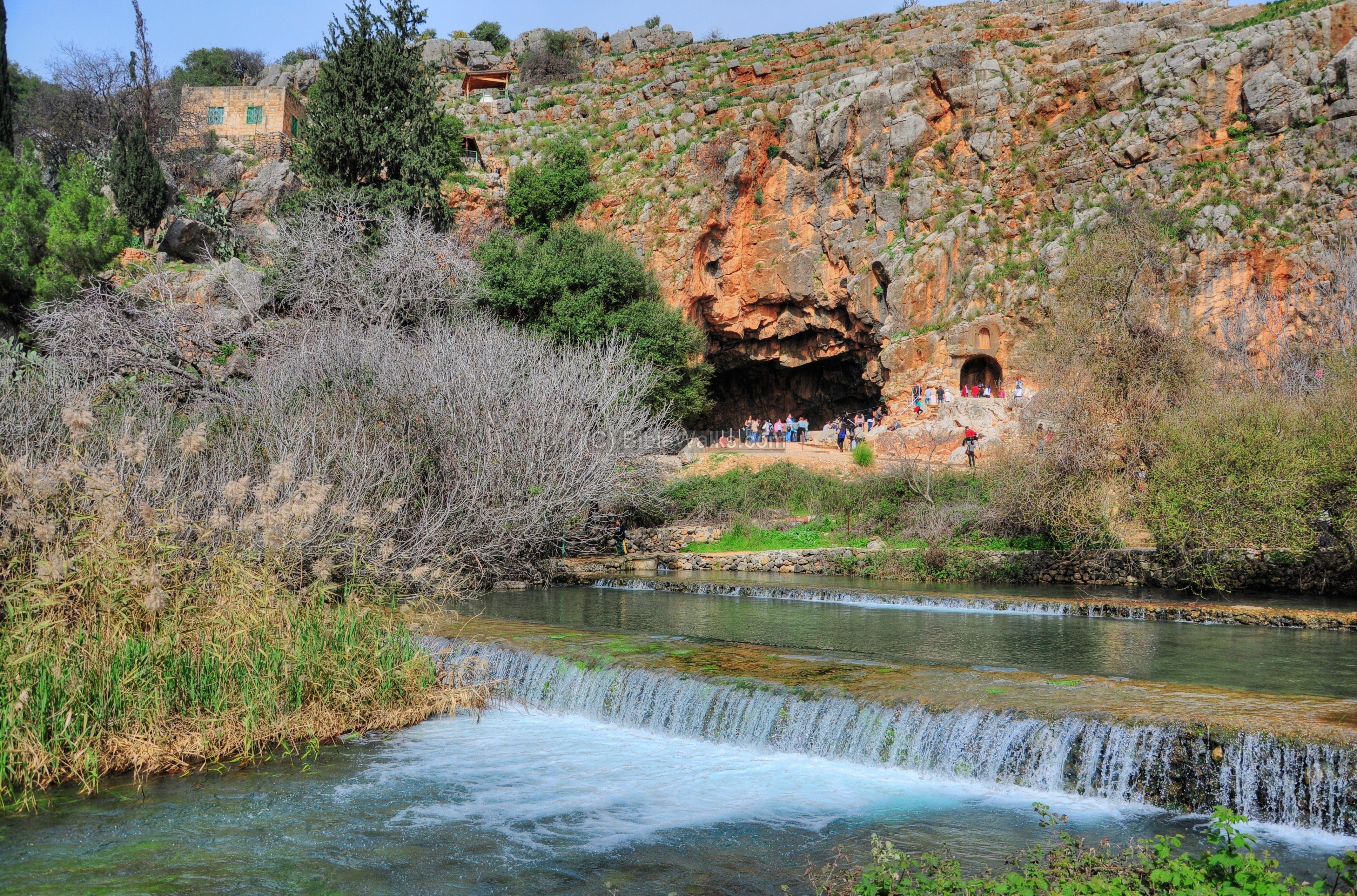Our guide
shuns churches, I am beginning to see, choosing instead atypical places in
which to educate us. As we head to our kibbutz hotel, we see in the distance both
Syria and Mr Hermon, a snow-capped peak.
Snow!
I laugh. Here I am trying to capture a
decent photo of snow. We left a whack of it behind, only to come to the
Holy Land and photograph it.
 |
| Snow on Mount Hermon |
Friends of
ours on this trip have the nicest room in the kibbutz, complete with a gorgeous view of
Mount Hermon, as it blazes orange and red in
the sunset. Supper is a quieter affair than at the Dead
Sea, but at the dessert bar,
there is a real honeycomb.
The next morning, Monday, we visit the
source of the Dan River, by which Abram would have traveled to save his nephew Lot.
Later, he would receive the Spirit of God and a new name. But traveling through here that would give him an horrific understanding of what it meant to sacrifice his son, Isaac. Here, at the temple of Pan, we learn the terrible history of child sacrifice.
 |
| The source of the Dan, which feeds into the Sea of Galilee. |
Later, he would receive the Spirit of God and a new name. But traveling through here that would give him an horrific understanding of what it meant to sacrifice his son, Isaac. Here, at the temple of Pan, we learn the terrible history of child sacrifice.
But first the easy walk meanders through a deceptively peaceful setting of forests and ancient remains, past vistas that include views of Syria.
Then we reach the Temple of Pan. Pagan parents would throw their children in to appease the god Pan, who was a fearful, disgusting god, from where we get the word ‘panic’, and certainly not the cute cartoon character from the children's show, Hercules.
 |
| Syrian in the distance |
 |
| A gate through which Abram walked |
Then we reach the Temple of Pan. Pagan parents would throw their children in to appease the god Pan, who was a fearful, disgusting god, from where we get the word ‘panic’, and certainly not the cute cartoon character from the children's show, Hercules.
 |
| The gate of Hades. Copyright Bible Walks https://biblewalks.com/Photos55/Banias2.jpg |
More
importantly, we learn that Jesus brought his disciples here and asked them who
the people thought He was. Peter answered, “You are the Christ!” and it was here
that Jesus said it would be Peter who will build His church.
But why here? Our guide tells us that Pan was repugnant, the child sacrifices awful. Parents could hear their babies crying deep down in the cave after they’d been thrown in. Only when the waters from the melting snows of Mount Hermon above carried their remains out to the stream nearby, did the pagans believe Pan had accepted their sacrifices.
Yet, our guide speculates, Jesus came here, and said to Peter, “On this rock you will build my church and the gates of Hades will not prevail against it.” So many valid interpretations of His words:
Having learned from God who Jesus was, Peter, now the rock, will now build a church? A church that will overcome even this horror?
But why here? Our guide tells us that Pan was repugnant, the child sacrifices awful. Parents could hear their babies crying deep down in the cave after they’d been thrown in. Only when the waters from the melting snows of Mount Hermon above carried their remains out to the stream nearby, did the pagans believe Pan had accepted their sacrifices.
Yet, our guide speculates, Jesus came here, and said to Peter, “On this rock you will build my church and the gates of Hades will not prevail against it.” So many valid interpretations of His words:
Having learned from God who Jesus was, Peter, now the rock, will now build a church? A church that will overcome even this horror?
Or is it about showing
how we need to go to the most degrading places to preach the Gospel? Jesus came to this repugnant place and preached. He
reached out to the lowest of the low.
I peer into the deep cave, now filled in. Our guide had said it was so deep, the pagans
believed it was an opening to Hades. Was this gateway, this abyss, the one that
would not prevail against the church? Being here makes those words feel fearfully
real.
And what
about Abraham, who would have known about the child
sacrifices, the way it was believed that the more the child suffered, the more
likely the sacrifice would be accepted by a pagan god? How did they connect to Isaac?
Our guide says little more but I suspect we will eventually learn.
Our guide says little more but I suspect we will eventually learn.
Oddly, as I did my research afterwards, I learn that Pan was the only god who died. A fisherman heard a divine voice and spread the news. And some, like the theologian, Chesterton, speculate that it allowed for the pagans to go from Pan worship to the true God.
A fisherman spreading good news? interesting.



No comments:
Post a Comment